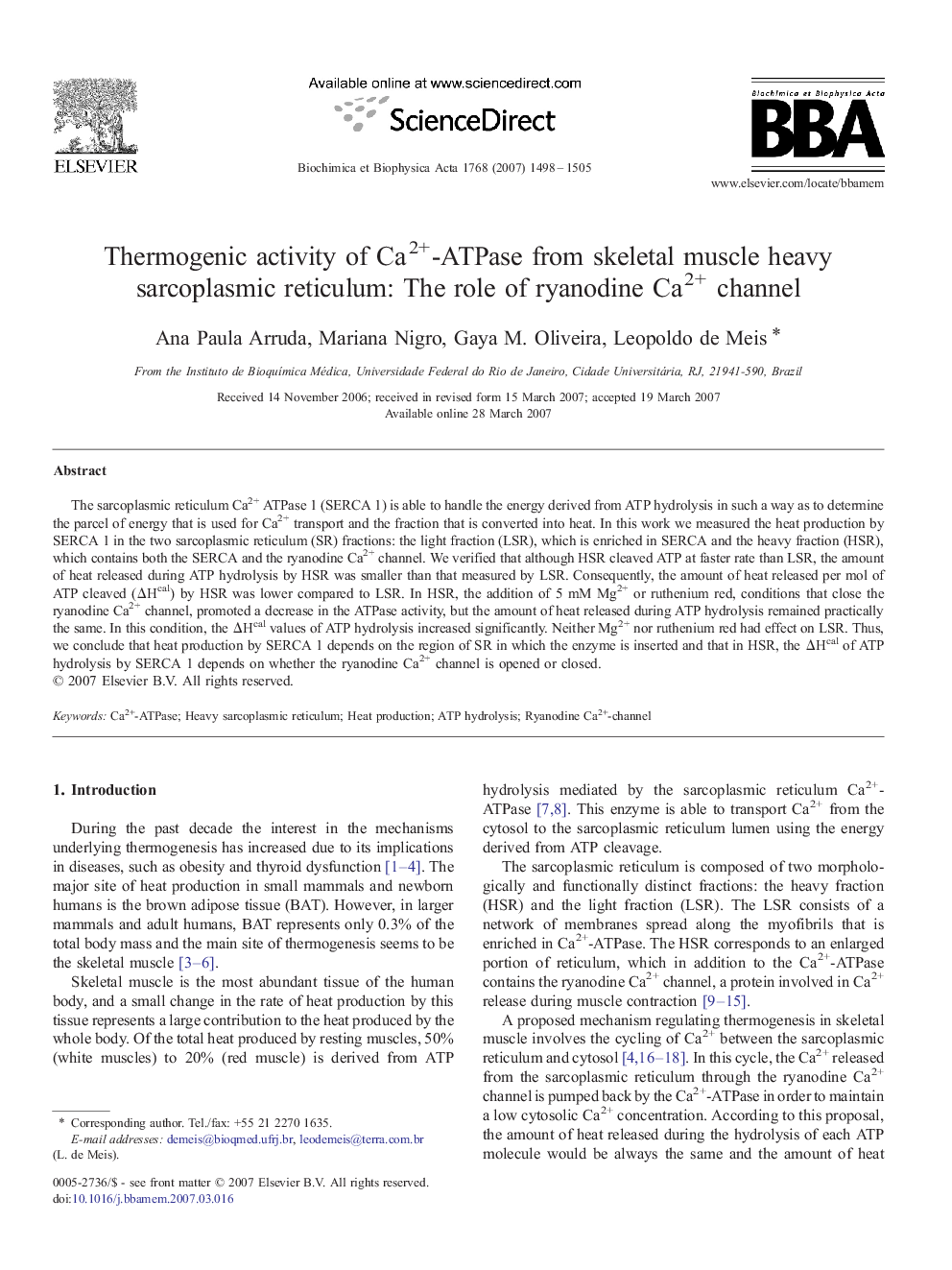| Article ID | Journal | Published Year | Pages | File Type |
|---|---|---|---|---|
| 1945896 | Biochimica et Biophysica Acta (BBA) - Biomembranes | 2007 | 8 Pages |
The sarcoplasmic reticulum Ca2+ ATPase 1 (SERCA 1) is able to handle the energy derived from ATP hydrolysis in such a way as to determine the parcel of energy that is used for Ca2+ transport and the fraction that is converted into heat. In this work we measured the heat production by SERCA 1 in the two sarcoplasmic reticulum (SR) fractions: the light fraction (LSR), which is enriched in SERCA and the heavy fraction (HSR), which contains both the SERCA and the ryanodine Ca2+ channel. We verified that although HSR cleaved ATP at faster rate than LSR, the amount of heat released during ATP hydrolysis by HSR was smaller than that measured by LSR. Consequently, the amount of heat released per mol of ATP cleaved (ΔHcal) by HSR was lower compared to LSR. In HSR, the addition of 5 mM Mg2+ or ruthenium red, conditions that close the ryanodine Ca2+ channel, promoted a decrease in the ATPase activity, but the amount of heat released during ATP hydrolysis remained practically the same. In this condition, the ΔHcal values of ATP hydrolysis increased significantly. Neither Mg2+ nor ruthenium red had effect on LSR. Thus, we conclude that heat production by SERCA 1 depends on the region of SR in which the enzyme is inserted and that in HSR, the ΔHcal of ATP hydrolysis by SERCA 1 depends on whether the ryanodine Ca2+ channel is opened or closed.
